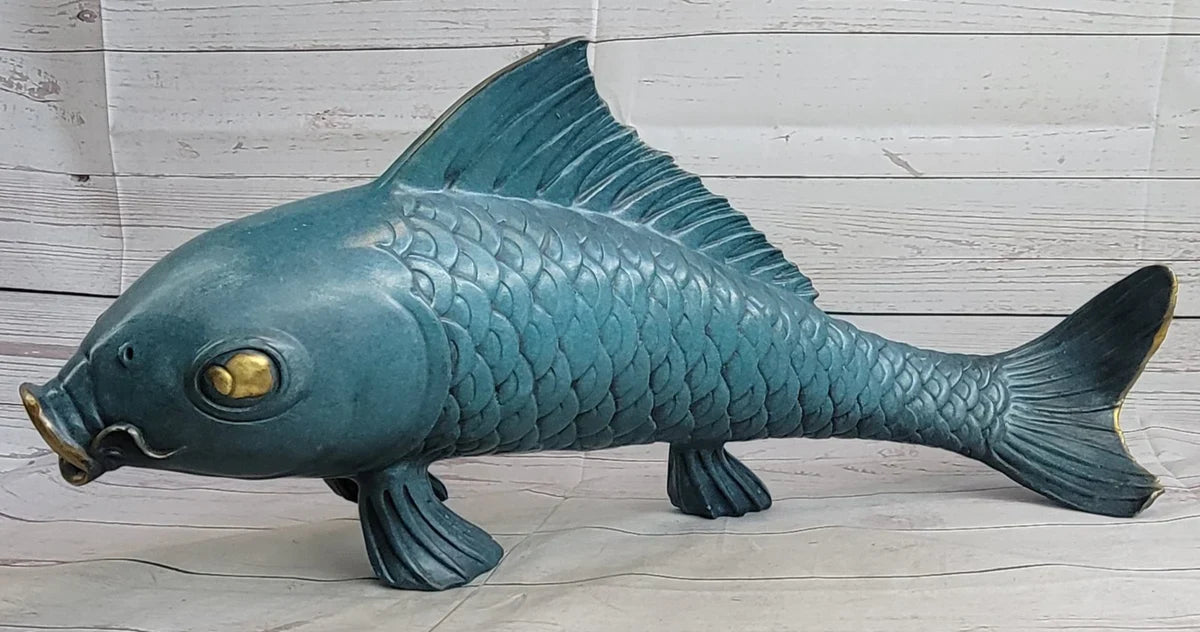Picture two bronze sculptures side by side. One is freshly cast, gleaming and flawless, yet silent.
The other, aged by a century of sun and rain, wears a rich mosaic of greens and blues that tells a thousand stories.
This transformation is patina, not decay, but rebirth. It’s the result of time collaborating with the artist, turning bronze into a living heirloom and coloring it with history.
Let’s explore how this natural process blends science and art, making time the final sculptor.
What is Patina?
Patina is the thin layer that forms on bronze and other metals as they age. Bronze patina appears when the surface reacts with air, moisture, and time, changing color, often into beautiful shades of green, blue, or brown.
For example, the Statue of Liberty’s green color comes from its natural patina. Instead of damage, this layer protects the metal and gives it a unique, aged beauty. That’s why artists and collectors value bronze patina, it reflects bronze aging, showcasing history, character, and lasting quality.
How Patina Forms: The Science of Transformation

Patina is a natural result of chemistry. Bronze, an alloy of copper and tin, reacts with air, moisture, and carbon dioxide over time. This reaction forms copper carbonate, the green-blue layer seen on aged bronze statues, like those in parks or museums.
Unlike rust, which weakens iron, patina protects bronze, creating a durable outer layer. Its colors vary by environment. Sea air forms greener tones (copper chloride), while urban areas produce bluer hues (copper sulfate). Each patina tells the story of its surroundings.
How Patina Protects Bronze Sculptures Over Time
While bronze sculpture patina is often admired for its beauty, its most important role is practical. It acts as the sculpture’s natural defense. This stable, durable layer seals the raw bronze beneath, protecting it from moisture, pollutants, and other corrosive elements.
Much like a scab protects healing skin, bronze patina forms a shield that preserves the integrity of the metal over time. Conservators value it not just for color, but as the sculpture’s own engineered armor.
Key Benefits of Patina for Bronze Sculptures
-
Protects Against Corrosion and Weathering: Bronze sculpture patina acts as a natural shield, preventing moisture, pollutants, and other environmental factors from directly contacting the bronze. This slows down corrosion and protects the sculpture from damage caused by rain, humidity, and seasonal changes.
-
Maintains Structural Integrity Over Centuries: By forming a stable outer layer, patina safeguards the underlying bronze, ensuring that sculptures remain strong and intact for generations. This natural defense preserves both the form and durability of the artwork, allowing it to withstand the test of time.
-
Creates Unique, Environmentally-Influenced Coloration: The colors of patina, greens, blues, browns, develop based on a sculpture’s exposure to air, moisture, and surrounding elements. Each piece tells a story of its environment, giving every bronze artwork a one-of-a-kind visual character.
-
Preserves Historical and Aesthetic Value: A well-formed patina reflects the sculpture’s bronze aging and its journey through time. Conservators and collectors treasure it for the authenticity and depth it adds, enhancing both the historical significance and artistic beauty of the piece.
-
Reduces Need for Harsh Treatments or Coatings: Because patina forms a natural, protective barrier, it minimizes the need for chemical sealants or artificial coatings. This allows the sculpture to age gracefully while maintaining its original material integrity, reducing the risk of damage from human intervention.
How the Natural Patina of Your Bronze Sculptures Can Enhance Your Home Interior
A bronze sculpture is more than just decoration, and it adds life and character to a room. Its natural patina, the colors and textures that form over time, help the sculpture blend beautifully with your home and make it feel warm, elegant, and unique.
-
Adds Depth and History: A bronze sculpture with rich patina brings timelessness and depth to a room. It contrasts contemporary decor, creating a curated, evolved feel, as if telling a story across generations.
-
Creates a Focal Point with Feeling: The unique colors and textures of patina draw the eye subtly. Patinated bronze captivates without shouting, inviting close inspection and adding quiet intrigue and sophistication to any space.
-
Harmonizes with Your Color Palette: Patina’s earthy tones complement wood, leather, stone, and varied color schemes. Warm browns add intimacy, green-blues highlight cooler tones, allowing the sculpture to unify and enhance a room’s design flow.
By choosing a patinated bronze from European Bronze, you are not just selecting a piece of art, you are introducing a soulful element that adds narrative, depth, and timeless elegance to your home. It is the finishing touch that makes a house feel truly complete.
Bring the Beauty of Patinated Bronze Sculptures from European Bronze into Your Home
A bronze sculpture is more than just decoration. Its natural patina, the colors and textures that form over time, add beauty, warmth, and character to your home. Placed in any room, it becomes a unique focal point that blends with your décor and tells its own story.
European Bronze offers a wide variety of bronze sculptures, from classic to modern designs. Each piece is handcrafted and full of character. Browse our collection today and bring the timeless beauty of bronze sculptures into your home.

